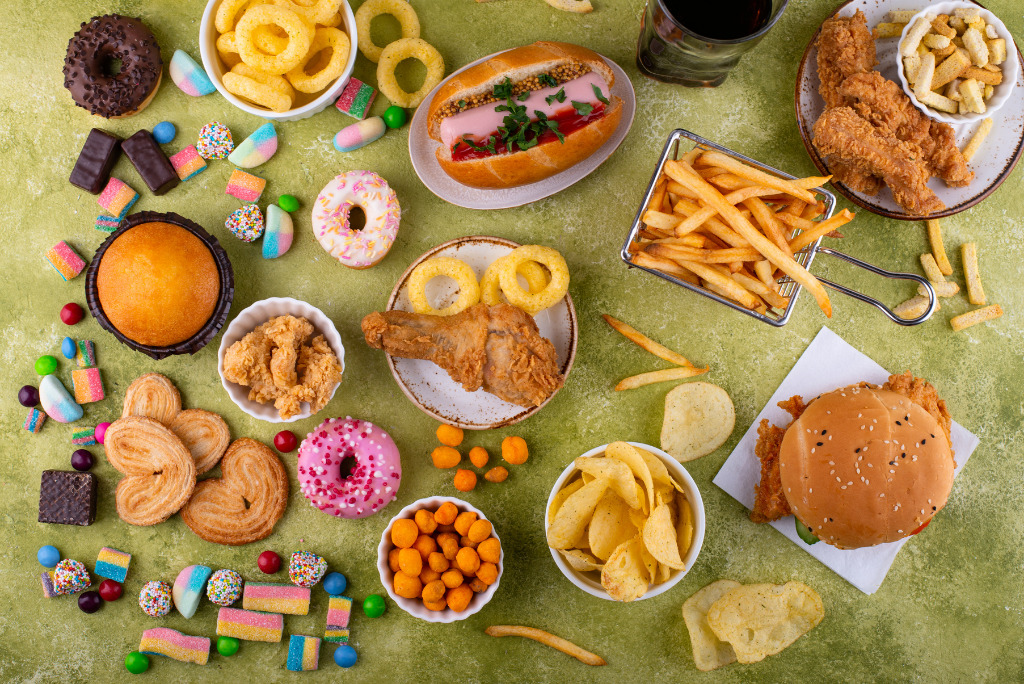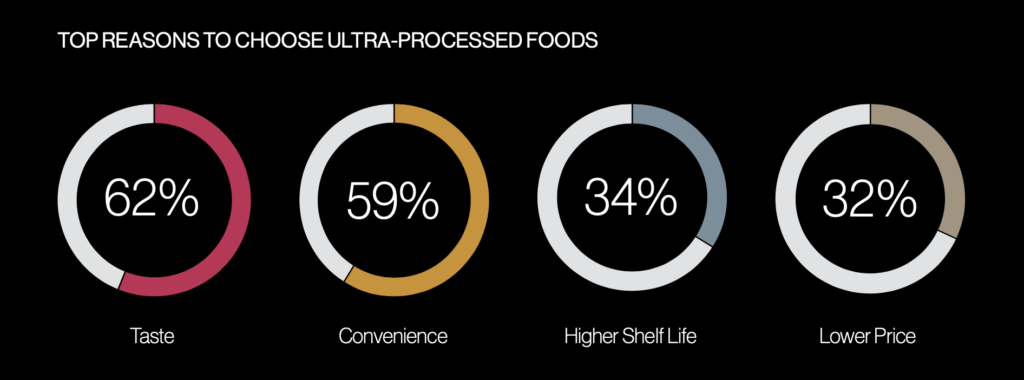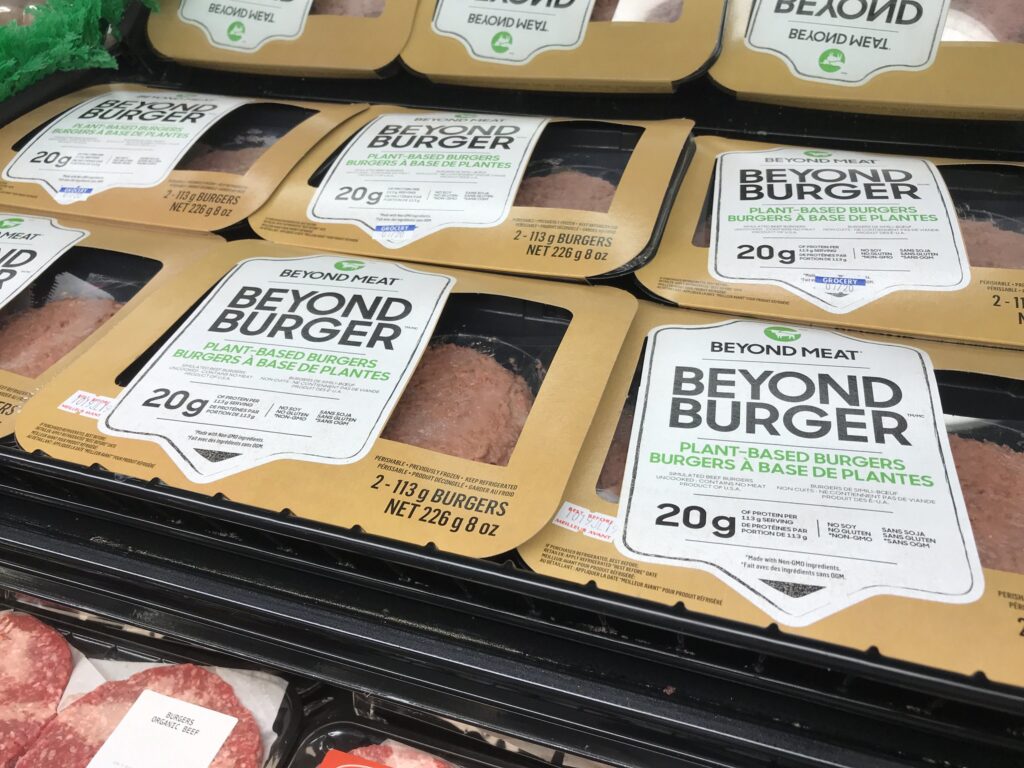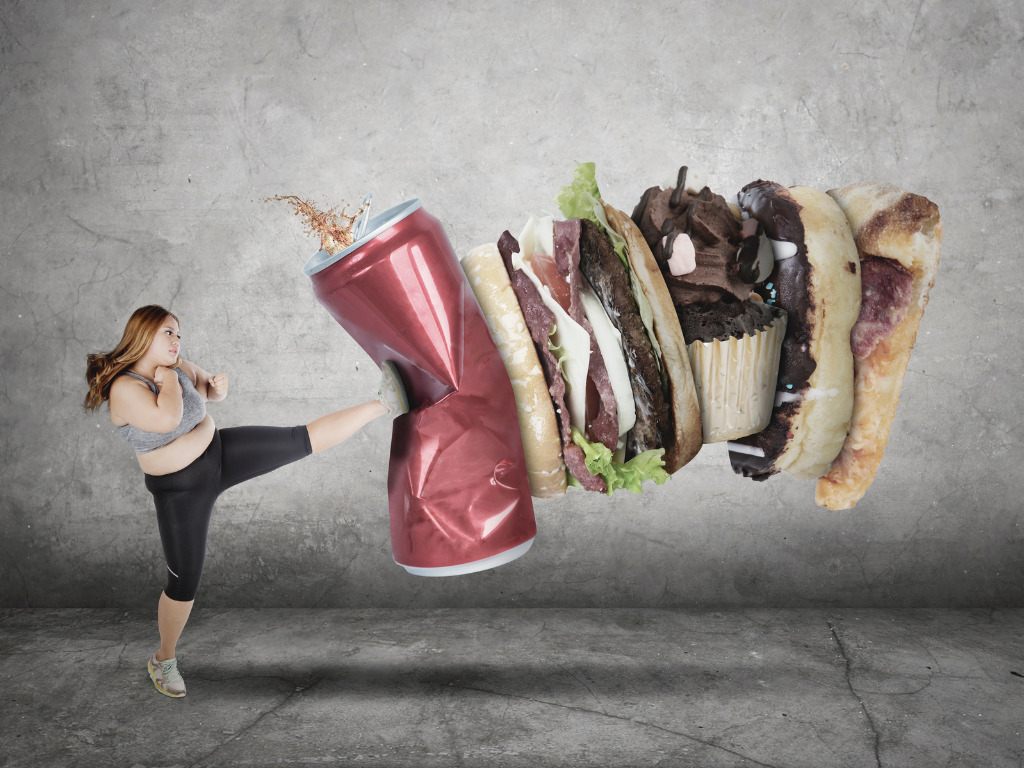Add Nutritious Ingredients to Ultra-Processed Foods To Get Americans To Pay More for Them
7 Mins Read
For most Americans, ultra-processed foods (UPFs) are a big part of their daily diets, but they have been linked with a host of diseases and health detriments. In that light, a new study has found that Americans would be willing to eat and pay more for UPFs if they carried nutritious ingredients with added health benefits.
Ultra-processed foods have been very prominent in the news cycle of late. One report suggests that one in seven of us are addicted to these foods, while another finds that they contribute to a decline in mental well-being. One nutritionist says UPFs like fizzy drinks contribute to the overweight and obesity epidemic. Someone in Norwich, meanwhile, has created an app to help consumers find healthier alternatives to UPFs.
All these are headlines from the last week. UPFs are a matter of fierce ongoing debate, with many calling for a reduction in our consumption of such foods for both human and planetary help. Simply put, UPFs are convenient, mostly inexpensive industrial food products with additives and fillers for longer shelf lives, better flavour and multiple other reasons.
What are ultra-processed foods?
In 2009, researchers from Brazil led by a professor of nutrition and public health Dr Carlos Monteiro proposed a framework to classify edibles into four subgroups, called the NOVA classification. The first group contains unprocessed or minimally processed foods, which includes fresh, frozen and dried produce, milk and plain yoghurt, natural spices, legumes, grains, nuts and seeds, as well as stuff like pasta, couscous, flour, fungi, meat and fish.
The second category – “processed culinary ingredients” – comprises elements derived from the first group or from natural sources. These include seed, nut and vegetable oils, butter, salt, sugar, vinegar, maple syrup, and honey, among others. Meanwhile, the third group contains processed foods, defined as those produced by adding these culinary ingredients to unprocessed foods or made using baking, boiling, canning or non-alcoholic fermentation, for example. These can contain non-cosmetic additives that enhance shelf life or prevent bacteria: think fresh bread and cheese, canned vegetables, fruits in syrup, cured meats, salted nuts, etc.

The final category is UPFs, which comprise industrial formulations and techniques like extrusion or pre-frying, combined with cosmetic additives and often using substances of little culinary use, such as high-fructose corn syrup, hydrogenated oils or modified starch. That tub of ice cream in your freezer? UPF. Your morning cereal? UPF. Flavoured yoghurt? You know where this is going. These products are omnipresent in our diets and food system, but are often confused with ‘processed’ food – a category most food falls into. The flour, white rice and olive oil you cook with are all processed to some degree, but they’re not classed as UPFs.
UPFs have been dominating news headlines of late due to the recent publication of Ultra-Processed People: The Science Behind Food That Isn’t Food, a book by British infectious disease physician Dr. Chris van Tulleken, which suggests that large food companies are pushing consumers towards an increasingly processed diet.
A significant proportion of the food consumers by hundreds of millions of people across the world is ultra-processed and, according to many studies, not good for us. Experts have found that UPFs can raise the risk of heart disease, stroke, obesity, breast and colorectal cancer, and hypertension, alongside the aforementioned examples. But in the UK alone, 57% of the average person’s diet comprises UPFs, a figure that goes as high as 80% when it comes to children or people with lower incomes.
But there have also been calls to reframe our perspective of UPFs, with some saying these foods are necessary to feed the world and contain many components that play a role in nutrition. Similarly, experts have also cautioned against classifying all UPFs as bad, as the term itself doesn’t have a globally recognised definition and can be misleading. For example, a zero-sugar flavoured yoghurt will be classed as a UPF despite having no sugar or fat, but plain yoghurt is considered unprocessed.
The perception of ultra-processed foods in the US
In the US, the situation is even graver. UPFs consist of 60% of an average American’s daily calories, and 70% of what the country’s children eat. In fact, 73% of the US food supply is made up of these foods. Their safe-to-consume, convenient and cheap aspect means these foods are unavoidable for many – so what is the solution?
Could supplementing UPFs with more nutritious ingredients help? That’s what plant cell biotech firm Ayana Bio tried to find in a new consumer poll of 2,000 American adults. The US company, a spinoff from Ginkgo Bioworks that raised $30M in Series A funding in 2021, makes high-value ingredients like lemon balm and echinacea from plant cell cultures.

In its research, 82% of US consumers reported consuming UPFs in their diets. And despite the seemingly mounting evidence, 43% of Americans don’t believe these foods are bad for your health. The top reasons for Americans to choose UPFs in their diets are taste (62%), convenience (59%), better shelf life (34%) and lower price (32%).
Ayana Bio explored how consumers view ‘healthy foods’. It found that for 64% of Americans, healthier foods are more nutritious, rather than those that have fewer ‘harmful’ ingredients like fat, sugar and salt. And this is perhaps why Americans are open-minded in their attitude towards UPFs. About two-thirds (65%) would be open to incorporating UPFs if additional health or nutritional benefits were listed on-pack – this rises to 85% for parents with children under 18.
In fact, 74% would be willing to try these products if they contained one of the following benefits: better cardiovascular function, improved brain function, better sleep, better immunity, or increased energy. Ingredient quality is also a big motivating factor, pushing 52% of adults and 62% of parents with under-18s to include UPFs in their diet.
Meanwhile, 67% of respondents said they’d be willing to pay more for UPFs if they possessed more nutritious ingredients that delivered better health benefits, irrespective of their household income. Of these, 68% would pay up to $3 more for these products. Younger adults aged 18-34 are nearly twice as likely to pay more for healthier UPFs (84%) than those aged 65 and over (43%).
Can UPFs be ‘better’?
What does all this mean for plant-based foods? Many dairy and meat alternatives are classed as UPFs due to the presence of emulsifiers, stabilisers and other additives. But despite knowing that these may be UPFs, 60% of Americans reported they would consume more of these vegan meat and dairy products if they included ingredients known to have health benefits like improved brain or heart health.
Ayana Bio says food processing can help produce items with better cognitive function or immunity claims by enhancing unhealthy foods with added nutritional benefits. About two in five Americans say they’d be open to eating specific versions of UPFs with healthier twists – these include mac and cheese and cereal with the daily recommended value of broccoli (43%) and blueberries (42%), respectively, without the taste of these foods, as well as chocolate milk made with actual cocoa (40%).

The survey found that most Americans aren’t opposed to food processing – they just “need a compelling reason” to eat these foods. So it’s important for manufacturers to think about food processing from a health and nutrition lens. The report makes three key recommendations to improve UPFs:
The first entails using prioritising high-quality ingredients and flavour, as consumers are more selective about their choices. “By ensuring quality and taste, manufacturers will have an advantage over companies that don’t prioritise quality, nutrition and taste,” the study reads.
Second, people will pay more for healthier UPFs, despite continuing inflation and the cost-of-living crisis. “Processing doesn’t have to lead to cheap, empty-calorie foods,” notes Ayana Bio. “The majority of adult consumers are interested in high-quality ingredients and foods with higher nutritional value – even if that incurs an extra cost.”
Finally, the company suggests processing can incorporate nutrient-dense ingredients, which it claims can be produced affordably through technologies like its own: “Plant cell technology grows plant material directly from cells and optimises for important characteristics like high bioactive content (for example, antioxidants), stability and purity. These plant cell ingredients can boost nutritional content and build in health benefits when added to foods, with full traceability and a neutral taste and colour.”
“Our survey affirms that the majority of Americans are open-minded about incorporating healthier, processed food options into their diets if these options exist,” says Ayana Bio CEO Frank Jaksch. “The media has painted a discouraging picture of ultra-processed foods, but the reality is we need food processing methods to take the pressure off traditional agriculture to yield sustainable and nourishing ingredients for the masses.”



